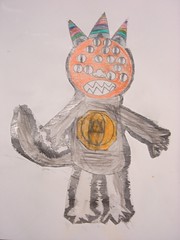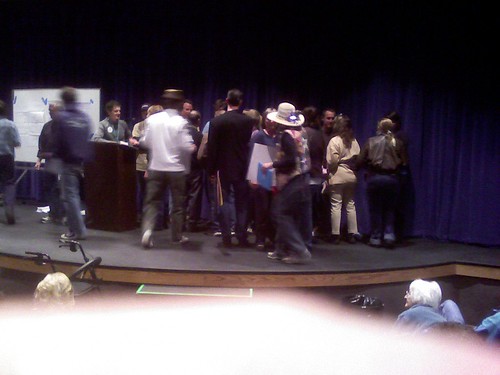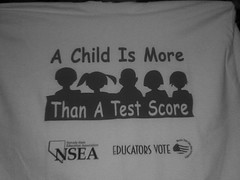
Unfinished creature designed to live on Mars
Â
One aspect of “messy” learning that not everyone gets are the disconnects … the misconceptions and fuzzy thinking that were really not the target of your plan that come up or become apparent as students work. Today as part of getting ready to take a trip to Mars, students were asked to demonstrate their learning about the conditions and composition of Mars by designing a creature that could survive there based on what is available to eat and drink and breathe and the weather conditions … you get the point.
When I explained the project the other day I pointed out several posters we have up around the room that display photos of Mars. One photo is very high quality and it really shows the color of the Martian surface. There are several others available for reference, along with searches for photos students did on their laptops. I stressed that when it came time to color their drawings they needed to pay attention to coloring the ground and sky accurately. The creatures were mostly being designed well, students have to be able to explain the design of every part of their creature … how does that mouth, nose, appendage, whatever help the creature survive on Mars?
As students were getting to the coloring-in stage I noted over and over how students were NOT choosing accurate colors. I would stop the class, show them a drawing and ask them if the sky or ground color was accurate. They would note it was not, I would then demonstrate again, how to try colors and mix colors on scrap paper that you could hold up to a photo to check for tone and shade and then color in your background as close to the real colors as possible. Students would nod their heads in understanding … AND I would get the usual questions from unsure students not willing to make a judgement on their own … but instead of giving them my opinion I would send them over to check for themselves. Many made poor decisions.Â

Is this a good color match? The student thought so.
It finally became apparent that this approach was not working, so we stopped everyone and took 10 minutes to really talk about what they weren’t understanding. “Well we’ve learned that the surface of Mars is red and I used a red pencil so shouldn’t that be right?” questioned a student … several students nodded their agreement. So I took their drawings over to the photo and asked them if the colors seemed the same (see photo). They would get puzzled expressions and say no, and you could tell they just couldn’t get why that didn’t work. Red is red after all.
I quickly grabbed a few drawings that were a better match and asked the struggling students (more than half the class) what was different. They noted mixed colors, different shadings and so on. I quickly made sure no one threw out their drawings … I showed them how to cut them out of the “flawed” background, paste it on a new paper and continue. As they worked, these puzzled students became excited students, and I was continually approached by artists showing me how much better a match their colors were and that lead to them being re-excited about their drawing because they could see it was a more accurate depiction. Now if you think this was terrible on my part … “art should be done for art sake and who are you to decide the correct colors” … I would often agree. However, this was art for science sake, the problem solving and thinking was the point.
Â
Learning is messy!







